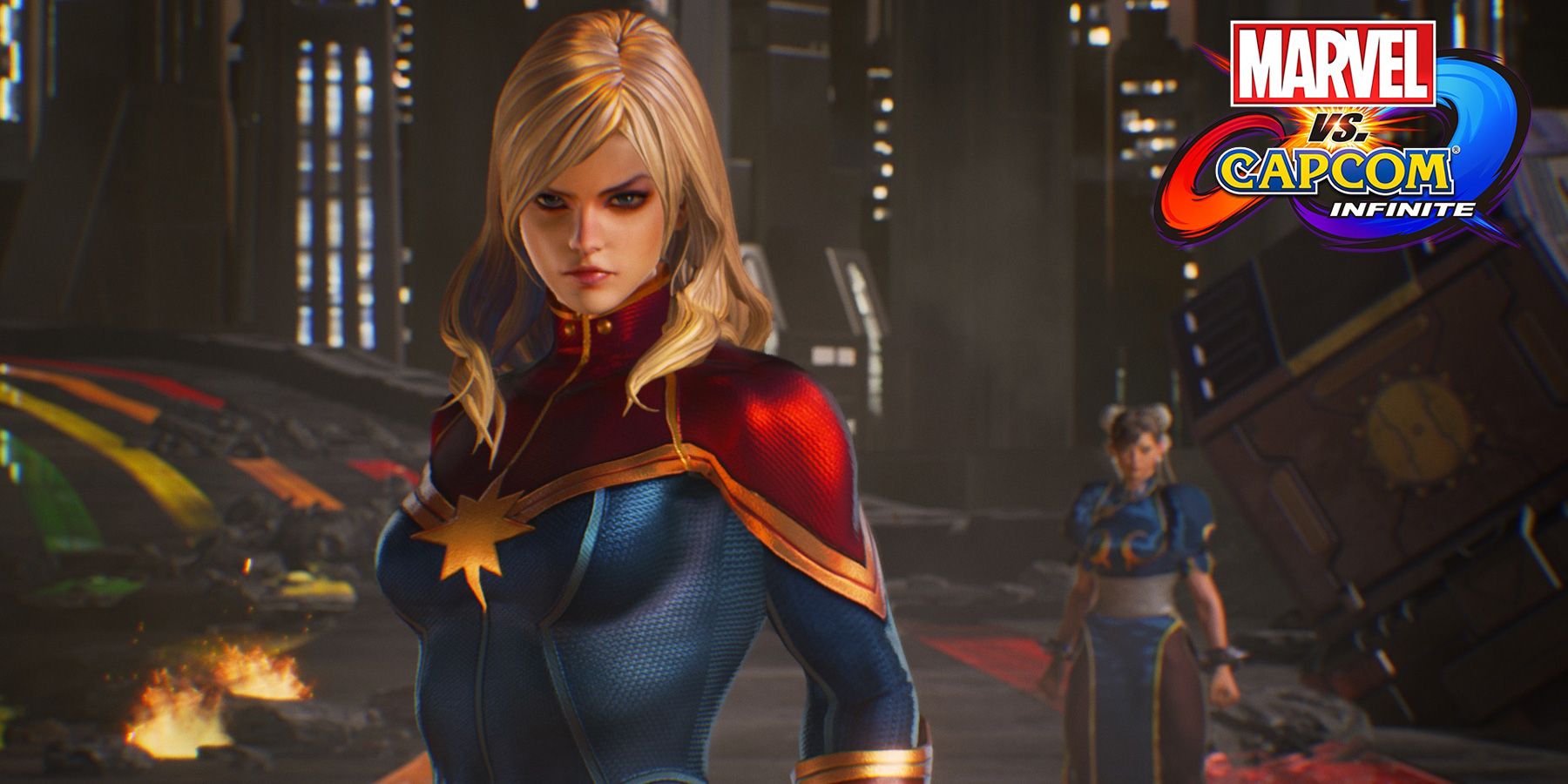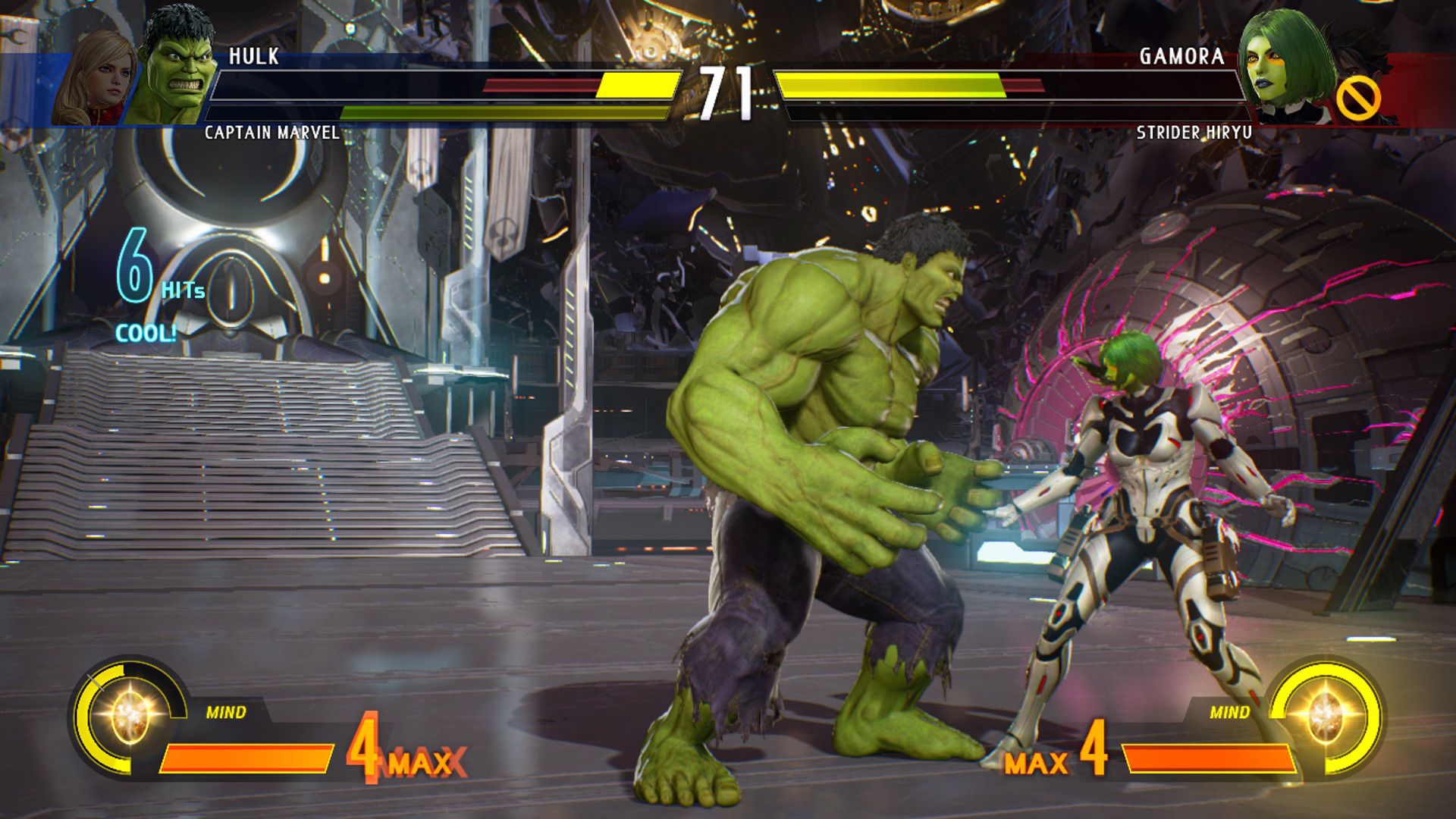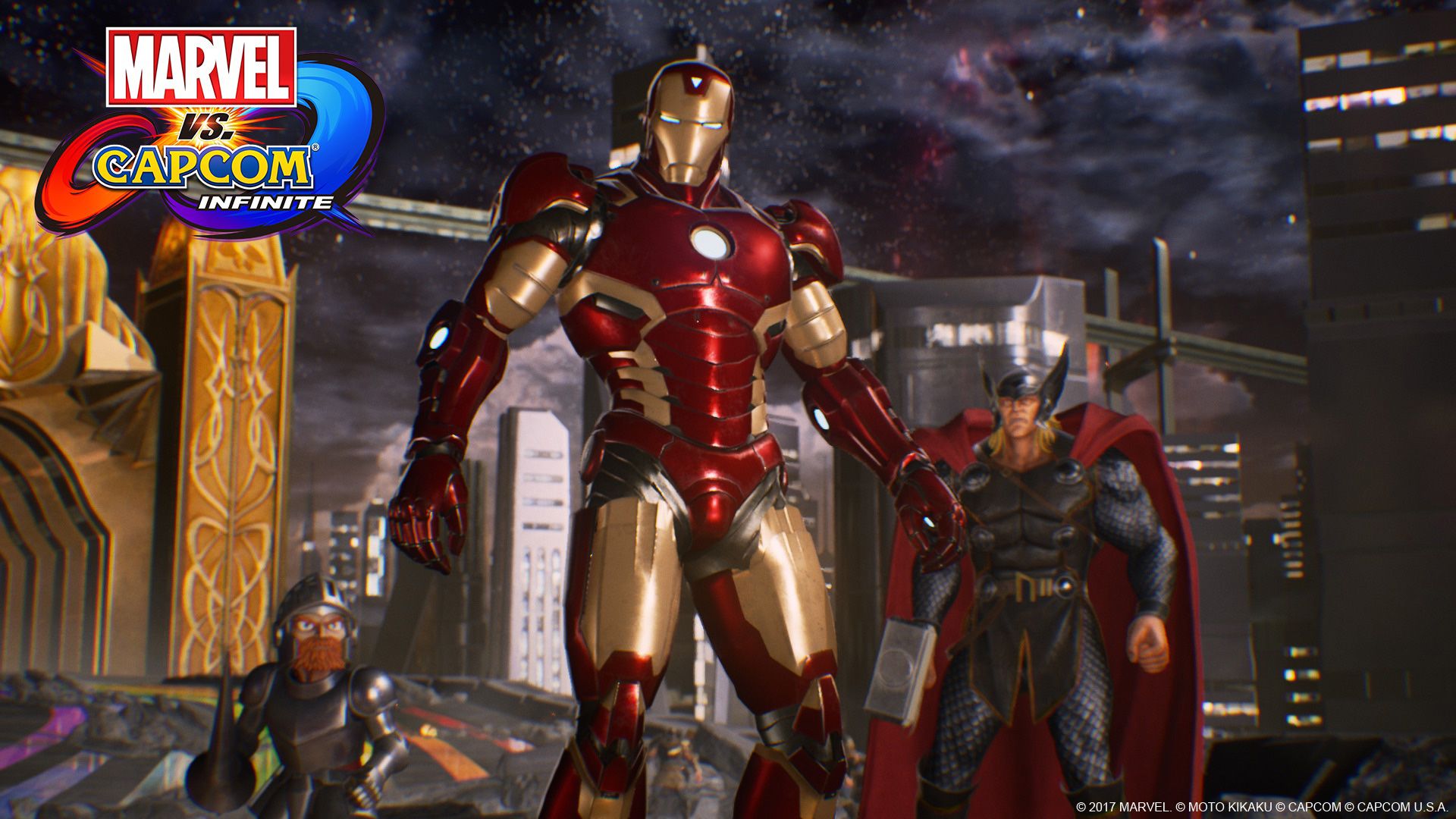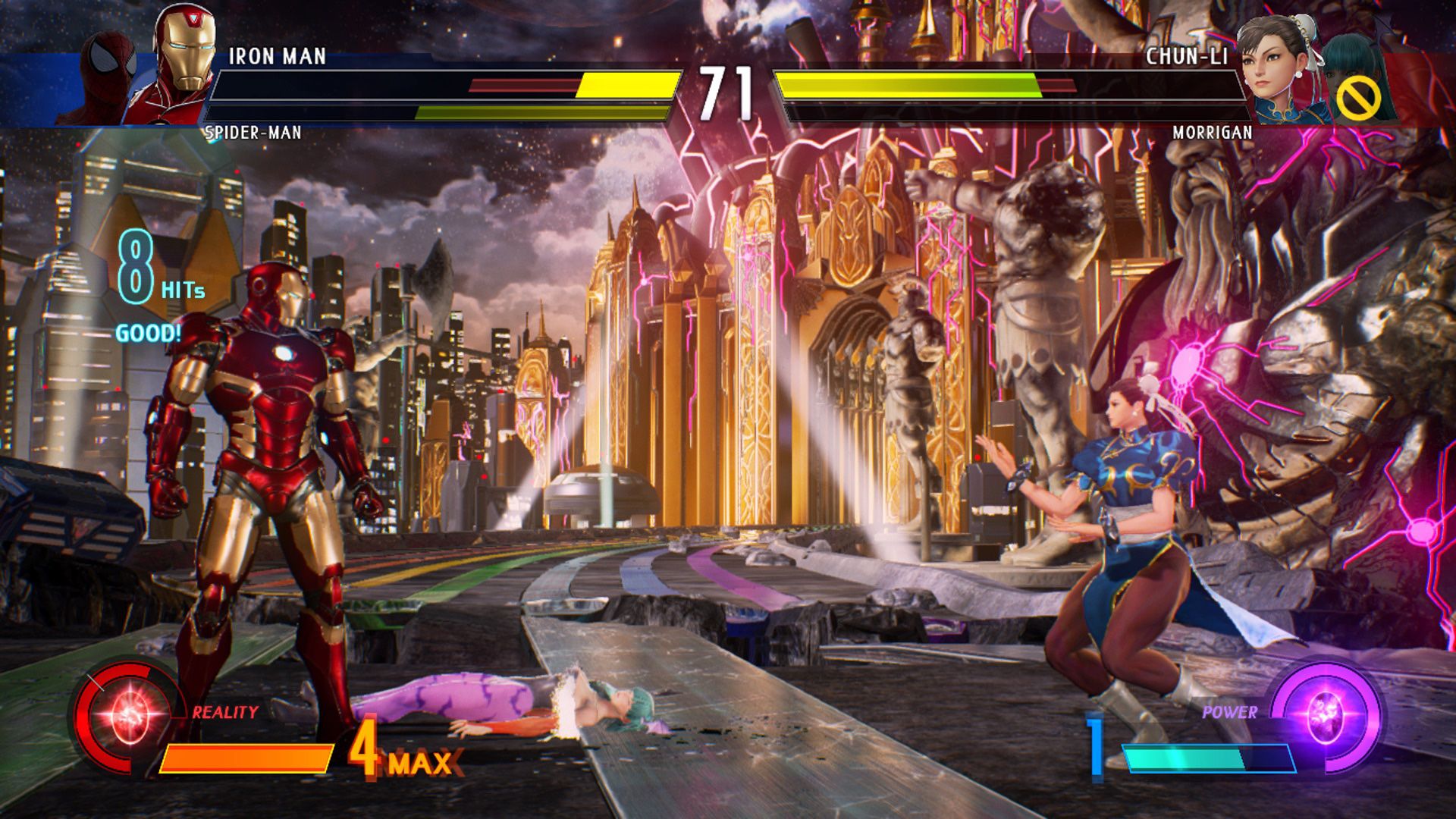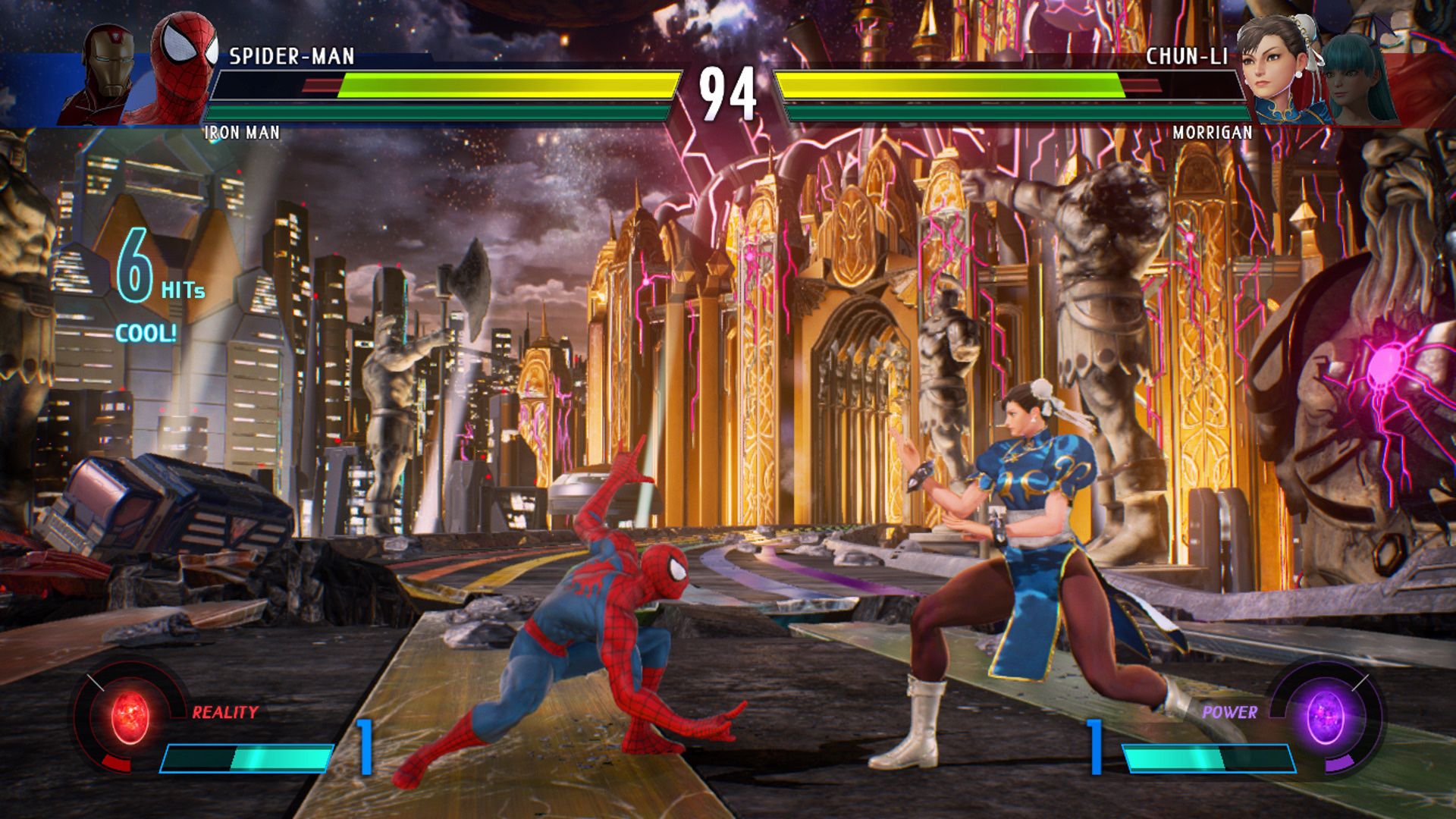With fighting games enjoying a renaissance in the past few years, and Marvel enjoying stellar success in movie theaters, it's no surprise that Capcom has revisited its iconic mash-up fighting series Marvel vs. Capcom with the newly released Marvel vs. Capcom: Infinite (Xbox One, PlayStation 4, PC). Though as we learned from playing it, there are some aspects of this brawler that'll appeal more to gamers than comic book fans.
RELATED: Marvel vs. Capcom: Infinite Fights for Better Story
For those unfamiliar with this series, the Marvel vs. Capcom games are 2D fighters that pit iconic Marvel characters including Iron Man, Spider-Man and The Hulk against video game heroes such as Street Fighter's Chun-Li, Resident Evil's Chris Redfield, and Mega Man from, well, the Mega Man games. Characters also face off in teams of two (three on three in previous games), which players can switch between on the fly.
But unlike the Super Smash Bros. games, which similarly mashes together characters from different Nintendo games, Marvel vs. Capcom is a serious throw-down. Not as serious as Street Fighter or Tekken, mind you, but certainly more involved and detailed than the cartoony Super Smash Bros.
For comic book fans, the centerpiece of Marvel vs. Capcom: Infinite will be its story mode. In it, Asgard has been merged with Abel City from the Mega Man series to form Xgard, a robot city controlled by Ultron Sigma. So it's up to our heroes to set things right by teaming up to beat the bad guys down.
Initially, this mode has Captain America and Mega Man teaming up to battle a pair of Ultron Drones, followed by Captain Marvel and Chun-Li taking on, well, more Ultron Drones. In fact, it takes a while before you fight anything other than one of Ultron's drones or a robotic resident of Xgard. Eventually, though, you will get to take on Ultron Sigma, after which the infighting starts and we finally get to see Marvel and Capcom characters going at it.
There's even a bit of comedy in these pairings, such as when the mighty Thor is joined by Sir Arthur from the old Ghosts 'n Goblins games, especially since Arty moves in the same exaggerated way he did in his '80s arcade days.
As for that fighting, Marvel vs. Capcom: Infinite is decidedly closer to such dedicated brawlers as Street Fighter V than such comic book-friendly ones as Injustice 2. Mostly because while you can kind of button-mash your way to victory in the latter, that doesn't work so well here. Instead, you have to use complex button combos if you want to do any serious damage. You even have access to different Infinity Stones, which give you a whole different set of punishing blows.
That said, Marvel vs. Capcom: Infinite does make landing combos a little easier than it is in Street Fighter V, if only because mashing the same button repeatedly is often a combo unto itself. Jam down on the light punch button enough times, for instance, and you'll land more than just a succession of light punches. It's just too bad they took out the tag team attacks, which are a staple of fighting games where characters team up.
Though Marvel vs. Capcom: Infinite may not be as much of a button masher as Injustice 2, the two comic book fighters do look alike, so much so that I'm now wondering if Captain Marvel and Supergirl are related. Though I don't recall anyone in Injustice 2 having such outrageous proportions as Captain America does in Marvel vs. Capcom: Infinite, which makes him look like closer to the "Heroes Reborn" era.
As for their voices, Marvel vs. Capcom: Infinite eschews the movie stars for the people who've voiced these characters in the Marvel cartoons on Disney XD. Which is fine. Rocket may not sound like Bradley Cooper, but his voice is still gruff and snarky. Though it is weird that Iron Man sometimes sounds like Robert Downey, Jr., and sometimes sounds more like Andy Richter.
While some comic book fans will be happy just to play the story mode, they'll also have fun with "Mission Mode," which not only includes a helpful tutorial, but also presents a series of character-specific fights that each have their own challenges. Ghost Rider's third battle, for instance, requires you to "Combo from a special move into a unique move," while the fourth Hawkeye fight is only complete if you "Perform a combo using an air combo." Hmmm… maybe the tutorial is worthwhile after all.
People who don't play well with others can also engage in one-off fights of their own choosing in "Battle Mode," which lets you play as the game's 30 different characters in such locations as the throne room of Xgard, the Avengers Tower, or the offices of A.I.M.Brella. "Battle Mode" also includes an option to play against a friend who's sitting next to you on the couch, as well as "Arcade Mode" where, after picking two combatants and the Infinity Stone you'd like to use, you fight through a succession of opponents.
That said, the real appeal of "Battle Mode" is its online mode, which is where this will separate the readers from the gamers (though people who do both are the luckiest people... in the world). This is totally because of the people playing Marvel vs. Capcom: Infinite online, not the game itself. As we mentioned, fighting games have been enjoying a renaissance the last few years, and much of that renaissance has been happening online. Which means that if you go online for a friendly game of Marvel vs. Capcom: Infinite, you might find yourself getting beaten down by some hardcore fight fan.
FINAL TAKEAWAY
In the end, comic book fans may not enjoy Marvel vs. Capcom: Infinite as much as they did the slightly shallower but also more forgiving Injustice 2, though not by a lot. And certainly not as much as their hardcore gamer pals, who will appreciate that this is a bit deeper where the combos are concerned. Still, if you're a fan of Marvel Comics, fighting games, and such Capcom classics as Resident Evil, Devil May Cry, and Mega Man, you'll have fun with this clever mash-up.
Marvel vs. Capcom: Infinite is available now for Xbox One, PlayStation 4, and PC.

